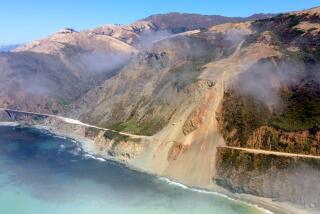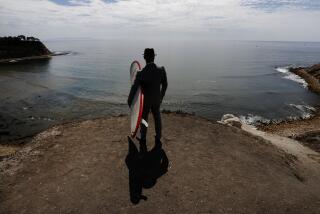Commentary : Coronado Is Still Willing to Pay the Toll
Twenty-plus years ago, before the San Diego-Coronado Bay Bridge opened, people transported themselves between San Diego and Coronado by boarding a vehicular ferry, or by driving along the Silver Strand state route. Coronadoans resisted the idea of building a bridge, fearing encroachment on a quiet and somewhat secluded and isolated life style. Coronado’s fears have been realized. Along with some of the conveniences and benefits of easier access have come ever-increasing traffic problems for the city.
When the bridge was financed, bond buyers and bridge users were told that a toll would be in place only until the bonds were retired. The ferry was even discontinued to eliminate competition and help speed the payoff of the bonds. The bonds were, in fact, recently retired, ahead of schedule because of higher than originally projected bridge traffic. And next month, the California Transportation Commission is scheduled to decide whether to continue the $1 bridge toll and, if so, for what purpose.
This past year, city officials, residents, commuters (represented by the North Island Assn.), Navy personnel and state Department of Transportation representatives have met on a regular basis to create a Unified Transportation Plan for Coronado. The San Diego Assn. of Governments and the Metropolitan Transit Development Board assisted. The plan attempts to smooth the flow of traffic through the city, allow for safe pedestrian and vehicular crossings, aesthetically improve the state routes--which also happen to be residential streets--and reduce traffic on the bridge and on our streets by encouraging the use of alternative modes of transportation (ferry, van pool, car pool, bus, trolley, water taxi--anything but the single-occupancy auto).
The Transportation Commission, the state agency that sets policy for Caltrans, has funded a good portion of the city’s transportation plan with the toll revenues that have accumulated since the bonds were retired. And happily, a pedestrian-bicycle ferry has returned. However, no money has yet been committed to encourage alternative transportation methods, and therein lies a major concern.
No one argues with the fact that Southern Californians are married to their automobiles, but if we are not willing to change our habits, our highways and our streets and our lungs increasingly will be choked. Changing those habits, however, means developing alternatives to the automobile, and that takes money. Bridge tolls can provide that money. They also can continue to assure adequate bridge maintenance, which will have to be paid for from other state funds if the tolls are ended.
Many Coronado residents and commuters are weary of the toll and feel unjustifiably penalized by being required to pay it. The tourist industry would prefer to discontinue the toll fee, although, for the daily visitor, one wonders if the toll is a consideration at all.
For everyone, the present method of collection has inherent inequities. And the $1 amount may be too high now that the bonds have been paid off.
But if the toll is lifted altogether, there may not be adequate state funds available for proper bridge maintenance and capital projects, and no dollars would be available to pay for the desirable and necessary alternative transportation program.
For those reasons, Coronado believes that retaining a toll is vital to assuring that proper public safety, health and welfare standards are met both now and in the future, for Coronadoans and all San Diegans who use the bridge.
More to Read
Sign up for Essential California
The most important California stories and recommendations in your inbox every morning.
You may occasionally receive promotional content from the Los Angeles Times.










